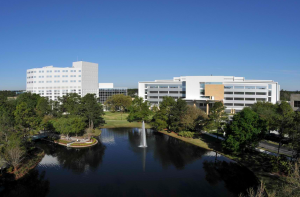 I recently escorted my mom to a doctor’s appointment at the Mayo Clinic in Jacksonville Florida. As we were pulling onto the campus, mom pointed out how nice everything was at the clinic and how she wished her church experiences could be as pleasant.
I recently escorted my mom to a doctor’s appointment at the Mayo Clinic in Jacksonville Florida. As we were pulling onto the campus, mom pointed out how nice everything was at the clinic and how she wished her church experiences could be as pleasant.
Of course this got me thinking and observing while we were there. Mom was right. While we realize a church is not a corporation, we can find similarities for success. Not everything listed below is possible in every church. In addition, our attention should not be focused only on facilities. Being “attractional” without the leadership of the Holy Spirit will be a total waste of time and resources. However, there is value in observing how people in the world respond to their environment. Some of these observations from Mayo may be applicable to your church.
- Easy access to parking. There were plenty of places to park and all the spaces had an easy access to the building. While churches don’t have the budget of a major corporation, parking is a necessary infrastructure. Guest (not visitor) parking near entrances is a great idea. Ask your leadership to park away from the building and leave closer spaces to guests, senior adults and young families with small children.
- A Multitude of Greeters. There were greeters stationed outside, at elevators and in designated information centers. Greeters even had towels and umbrellas provided for people coming to the building during a Florida rain storm. How hard would it be for a church to have an appointed team of greeters who meet people in the parking lot and escort them to the proper location?
- Well designed practical architecture. The building was well designed for their clients. People took advantage of the seating in the wide hallways. Mayo had a solarium where a volunteer coordinator invited local music students to play instruments to the joy of the patients. In church we may not be able to redesign your hallways but can we find a place in the foyer that is conducive to fellowship? Some churches have a fellowship area where there is coffee and snacks. Can you have someone occasionally play live music in the halls outside the worship center during transitions between Bible study and church?
- Smiling and caring workers. I realize that the workers were getting paid to be nice but it certainly gave the feeling that they were concerned for our well being. They talked to the patients in non-condescending gentle tones. It wouldn’t cost the church anything to train the ministers, greeters, and other leaders to smile and be pleasant to each other and congregation before and after services.
- Visual displays about past history and future expansion plans. It was nice to learn about Mayo’s heritage. They had pictures of the founders, the first nurses and even an article about the first custodian because she spent her life caring for the health needs of the patients. While they valued the past, they also had kiosk displays for the future expansion and information about new treatment wings in order to provide improve healthcare. We should celebrate and appreciate the past, both as a Christian and as a church member. Knowing how God worked in the past is vital in knowing He will be faithful in the future. Providing a vision for the future will help people work together. Without vision, the people perish. (Proverbs 29:18 loosely paraphrased.)
- Professional staff offering the best product possible. The staff, from the doctors to the receptionists, did everything they could to provide the best care for the individual. Churches have the best “product” imaginable. Sometimes we fail to present Jesus in a way that brings him the glory he deserves. This is even more true when we see the church struggle to work outside the building. If everyone in the church shared their enthusiasm about the Lord, perhaps our world would be different today.
- Diverse workforce and clients. The workers and the patients were from diverse ethnic and socioeconomic backgrounds. Most of the churches I have attended are not very diverse. Revelation 5 shows us that worship in heaven will include those of every race, tribe and tongue. Wouldn’t it be a nice preview of heaven to experience that now?
- Enthusiastic Patients excited about their treatment and cure. The hospital was still about the healing business. Most of the patients were really sick and needed the help that the hospital provided. The patients were vocal about the healing and care they were receiving. Some churches have migrated from a place where spiritually sick people find healing to a social club made up of Christians enjoying each other’s fellowship, sometimes at the fate of the sick around them. Has the main thing ceased being the main thing?
Corporations spend millions of dollars each year researching how people respond to stimulus. Casinos know how people respond to certain colored lights. Retail businesses know the psychology of music. They play fast music when they want you to move on quickly or play slow “musick” if they want you to stay and shop longer. Advertising and political firms hire panel groups to discuss pros and cons of their presentations or candidates. Churches often take the opposite approach. We do nothing. Our mantra seems to be a default “if you want it, here it is, come and get it.” Unfortunately, that strategy has proved not to work well.
Ministry action involves connecting the product (Jesus) with the clients (people). With the guidance of the Holy Spirit and some knowledge of how people respond, churches may want to implement some practical ideas to become more effective in how we relate to future attenders, assimilate guests, and build disciples and leaders.
